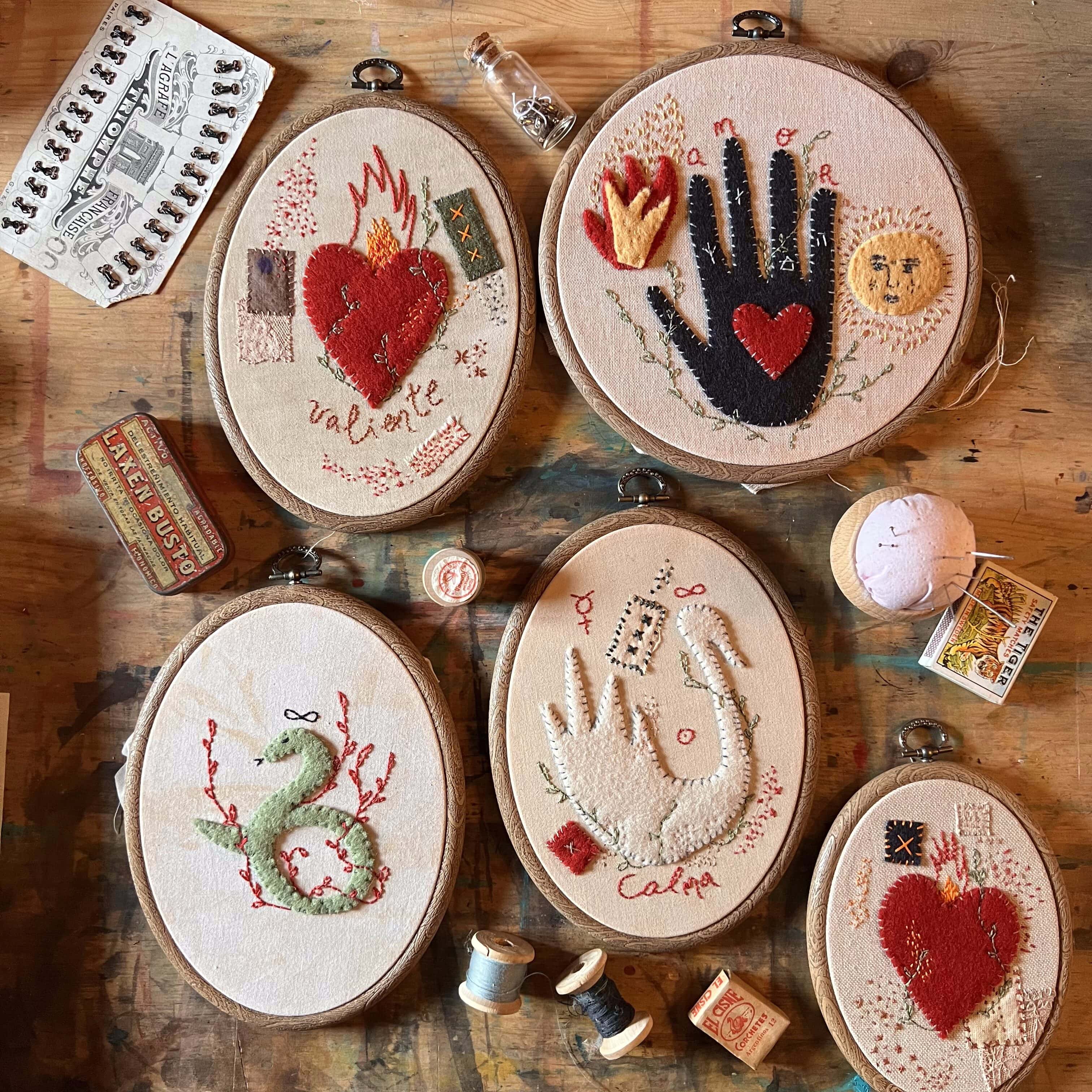
“Our lives are connected to textiles from the moment we are born, and we leave our energy in all those fabrics. They transform, just as we do.”
For someone living in a stone house in the Cantabria mountains, multimedia artist Aitor Saraiba lives a very interconnected life. His pieces, a stunning array of ceramics, textile works, and paintings, carry meaning that is both deeply personal and widely applicable, borrowing from his own life and global textile traditions. In addition to his personal practice, Saraiba also collects, plant-dyes, and sells wool with his neighbor, José, from his own flock of sheep, under the brand Lana Robla.
Saraiba describes his work as “traditional practices brought into his own world.” Inspired by Japanese sashiko and boro, South American folk arts, and more, he creates a textile tradition entirely his own. Aitor’s liberal use of color and evocative imagery are striking, and raised, varied textures lend a contrasting softness to many of his pieces. Working with classic forms such as amulets and quilts, there is a warmth and familiarity inherent to his textile practice that allows us to layer our own histories onto his, adding emotional depth to the art and our experience of it. Saraiba’s work has gained local and international acclaim, partnering with institutions such as Museo del Prado, Levi’s—and now, TATTER! This October 11th and 18th, join us for a two-part workshop building on the Spanish tradition of oratorios, or portable altars.
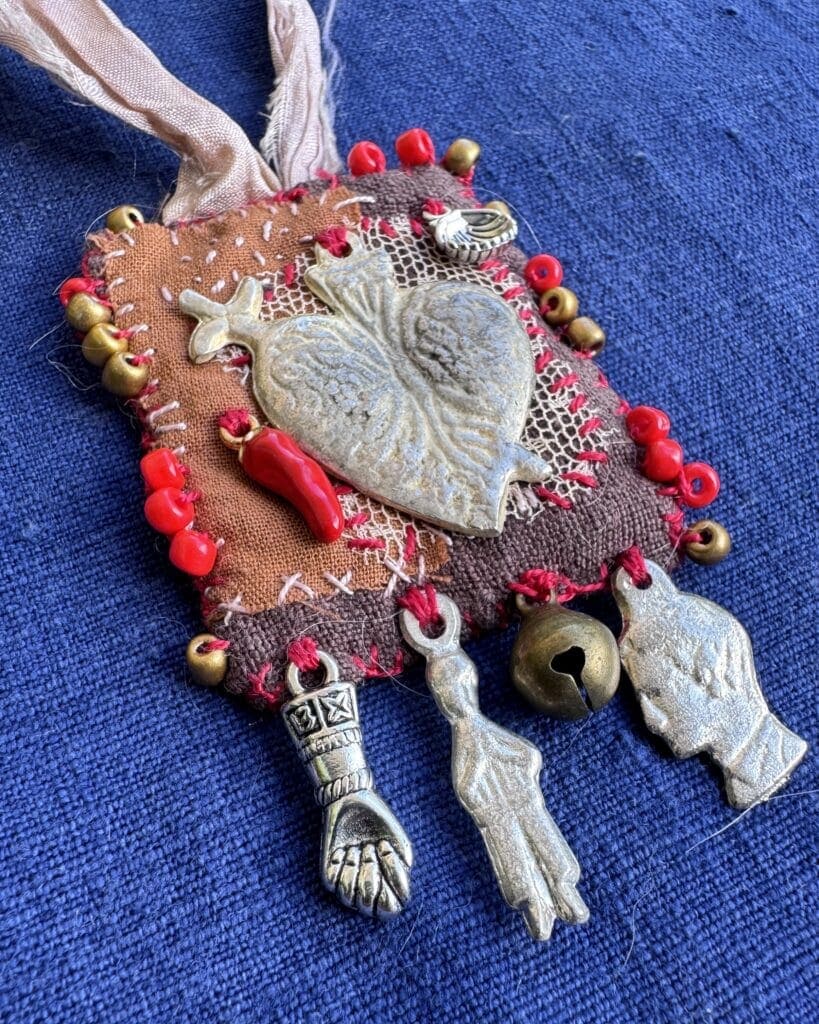

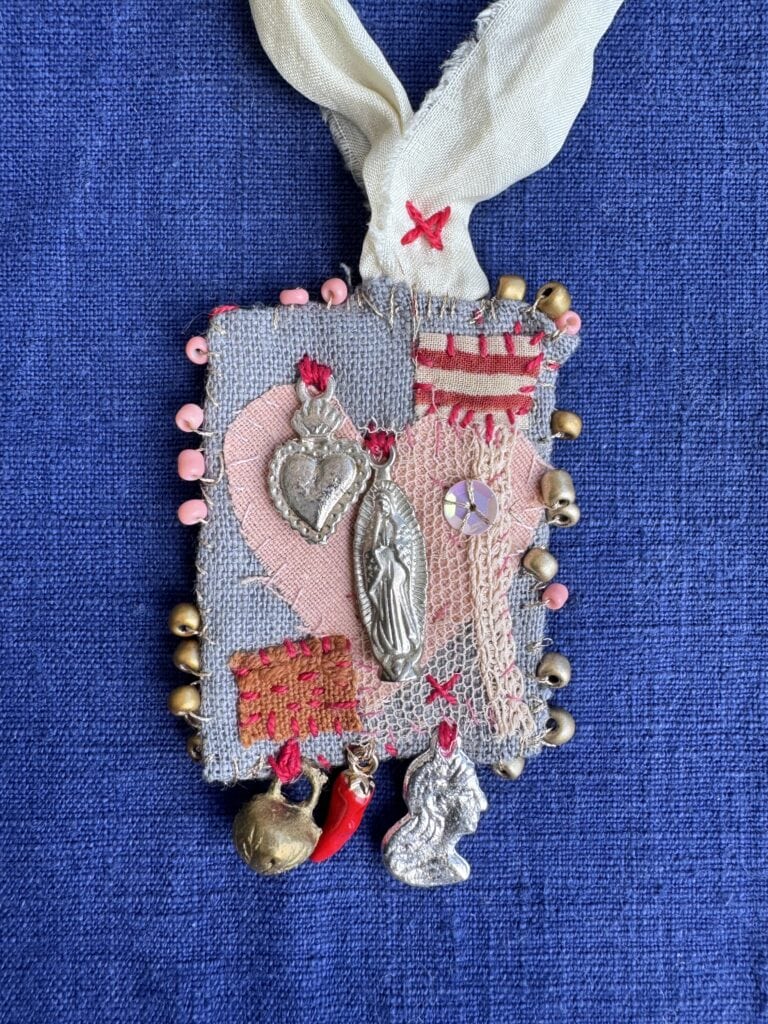
Earlier this week, Aitor Saraiba answered some of our questions about his work.
Your work often uses textile to invoke spiritual, or at least very personal, meaning. What about fabric lends itself to that work? Do you have favorite fabrics for that purpose?
My favorite fabrics are always the ones that carry history, the ones marked by the passage of time. Our lives are connected to textiles from the moment we are born, and we leave our energy in all those fabrics. They transform, just as we do. In my work, there is always a search for the spiritual, because everyday life is full of it—small rituals and moments of encountering ourselves. For me, sewing and mending are two of those rituals.
South and Central American art inspire many of your pieces—as a Spanish person, what feelings and ideas are associated with that connection?
Here in Europe, I believe there is no country without a connection to textiles and small amulets, always made from fabric. From Portugal to Poland, through Italy and Spain and so many other countries—not only in Europe, I would dare to say that almost everywhere on the planet humans have linked amulets and magical practices to small textile creations. Whether as amulets, portable altars, or places to deposit one’s devotion, they have been used for millennia.
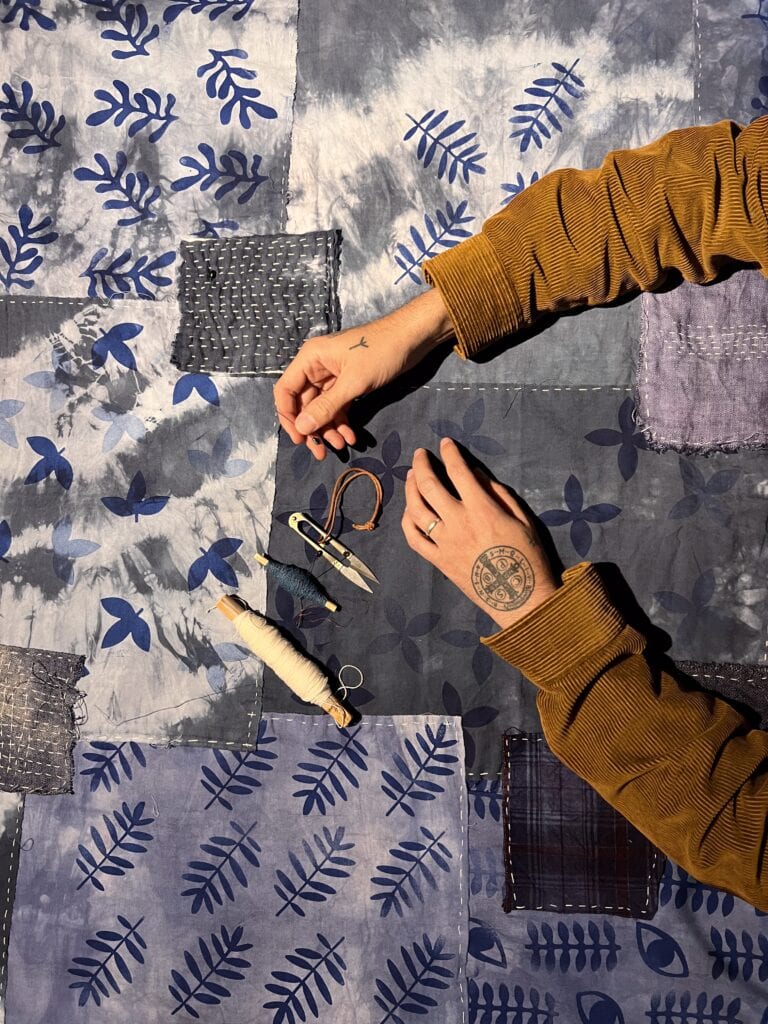
South and Central American art inspire many of your pieces—as a Spanish person, what feelings and ideas are associated with that connection?
Here in Europe, I believe there is no country without a connection to textiles and small amulets, always made from fabric. From Portugal to Poland, through Italy and Spain and so many other countries—not only in Europe, I would dare to say that almost everywhere on the planet humans have linked amulets and magical practices to small textile creations. Whether as amulets, portable altars, or places to deposit one’s devotion, they have been used for millennia.
What inspires you to adapt international textile practices into your own?
One of my first inspirations was my grandmother. As a child, she would scold me if I sewed on Sundays. She told me that God would be angry with me if I sewed on Sundays. That already seemed like a revolutionary act to me, so I thought it was a very good idea to sew on Sundays.
My personal biography is deeply connected to textiles, with mending as a form of family survival… I have been sewing for twenty years using fabrics that were found and forgotten by someone else. Later, I discovered this in Japanese boro, in Indian techniques… In the end, what my grandmother did with socks at home connected us with cultures and people that I didn’t even know existed at the time.
Textiles know no borders; textiles are what make us human.
As a mixed media artist, how does fabric operate in the larger context of your artwork? What do you enjoy about fabric in relation to other mediums?
My first works, when I was not even twenty years old, were made with fabrics—because that was what I had at hand. I didn’t have canvases, brushes, or oils, but I did have a pile of old sheets and threads I found around my family’s home.
Textile is my favorite medium. I work with ceramics, drawings, and photography, but it is in textiles that I cradle myself, where all the things that make me feel alive come together.
How has your recent shift to full-time artist changed your practice? Does social media play a part in that change?
I am 42 years old, and since I was 25 I’ve had the good fortune of surviving through my work. I say surviving because anyone who does what I do understands that you’ve sacrificed your life to poetry and craftsmanship, and no one gets rich from this. But it does make you tremendously happy.
Social media has been a springboard for my work. In recent years, places like Japan, the US, the UK, and Australia are where I feel the warmth and love for what I do. It is wonderful that someone like me, who lives in the mountains in a stone house, can be here giving this interview thanks to social media and the internet.
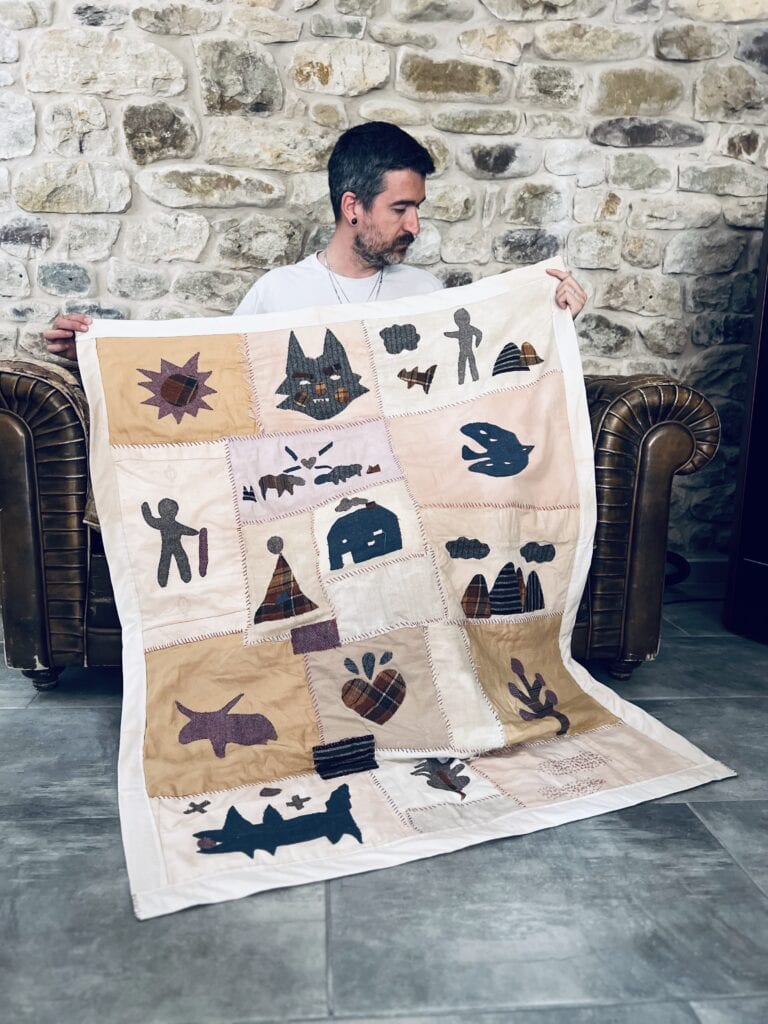
SIGN UP FOR AITOR’S CLASS: ORATORIOS
